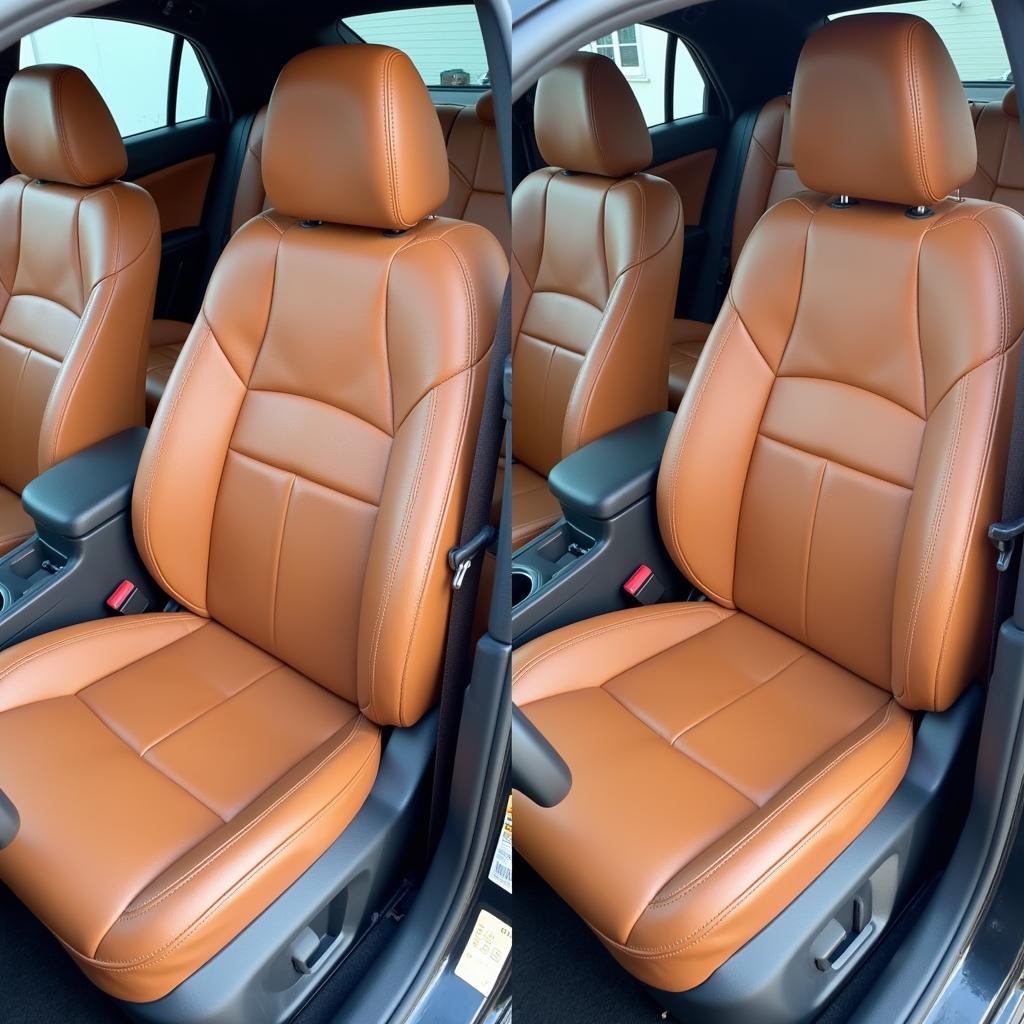Leather car seats are a luxurious addition to any vehicle, providing both comfort and aesthetic appeal. However, over time, leather can be prone to wear and tear, resulting in scratches, cracks, and fading. The good news is that in most cases, damaged leather car seats can be repaired, restoring their former glory. This comprehensive guide will delve into the intricacies of leather car seat repair, answering all your burning questions and providing valuable insights to help you make informed decisions.
Understanding Leather Car Seat Damage
Before exploring repair options, it’s crucial to identify the type and extent of damage your leather car seats have sustained.
- Cracks: These are often caused by exposure to sunlight, heat, and dryness, which can cause the leather to lose its natural oils and become brittle.
- Scratches: Sharp objects, pet claws, or even friction from regular use can lead to scratches on leather surfaces.
- Fading: Prolonged exposure to sunlight can fade the color of leather, diminishing its vibrant appearance.
- Stains: Spills from food, drinks, or ink can leave unsightly stains on leather seats.
- Tears: Accidents happen, and unfortunately, tears in leather seats are not uncommon.
Can Tears in Leather Car Seats Be Repaired?
Tears in leather car seats can be particularly concerning. While minor tears can often be repaired using specialized techniques and adhesives, larger tears may require more extensive work, such as patching or even seat cover replacement. If you’re dealing with a tear, it’s best to consult a professional leather repair specialist to assess the damage and recommend the most appropriate course of action. For more detailed information on repairing tears in leather car seats, you can refer to our dedicated article: can tears in leather car seats be repaired.
DIY vs. Professional Leather Car Seat Repair
When it comes to leather car seat repair, you have two primary options: do it yourself (DIY) or hire a professional.
DIY Leather Repair
DIY repair kits are readily available online and at automotive stores. These kits typically include cleaning solutions, leather fillers, dyes, and tools for minor repairs. While DIY kits can be a cost-effective solution for minor scratches, cracks, and fading, they require patience, attention to detail, and a willingness to learn.
Pros:
- Cost-effective: DIY kits are generally more affordable than professional repairs.
- Convenience: You can work on your own schedule and at your own pace.
- Sense of accomplishment: Successfully repairing your car seats yourself can be rewarding.
Cons:
- Time-consuming: DIY repairs can take time, especially for more extensive damage.
- Risk of further damage: Using the wrong products or techniques can worsen the existing damage.
- Limited results: DIY kits may not effectively address severe damage.
Professional Leather Repair
For more significant damage or if you’re not comfortable with DIY repairs, seeking professional assistance is highly recommended. Professional leather repair technicians possess the expertise, specialized tools, and high-quality materials needed to restore your car seats to pristine condition.
Pros:
- High-quality results: Professionals can achieve exceptional results, even for severe damage.
- Time-saving: Professionals can often complete repairs more efficiently than DIY methods.
- Guaranteed work: Reputable leather repair shops typically offer warranties on their services.
Cons:
- Higher cost: Professional repairs are generally more expensive than DIY solutions.
- Scheduling: You’ll need to coordinate with the repair shop’s availability.
Finding a Reputable Leather Repair Shop
If you decide to opt for professional leather car seat repair, it’s essential to choose a reputable shop. Here are some tips to help you find a qualified professional:
- Ask for recommendations: Seek referrals from friends, family, or your local automotive community.
- Read online reviews: Check online platforms like Yelp, Google, and Angie’s List for reviews from previous customers.
- Look for certifications: Certifications from organizations like the Leather Repair Association demonstrate a commitment to quality and professionalism.
- Request a portfolio: Ask to see examples of their previous work to assess their skill level.
- Get a written estimate: Ensure you have a clear understanding of the costs involved before any work begins.
Preventing Future Damage
Once your leather car seats have been repaired, it’s essential to take steps to prevent future damage and keep them looking their best.
- Regular Cleaning: Clean your leather seats regularly using a pH-neutral leather cleaner and a soft microfiber cloth.
- Conditioning: Condition your leather seats every few months to keep them moisturized and prevent drying and cracking.
- UV Protection: Park your car in the shade or use a windshield sunshade to minimize sun exposure.
- Seat Covers: Consider using seat covers to protect your leather seats from spills, dirt, and wear and tear.
Conclusion
Leather car seats can enhance the overall driving experience, adding a touch of luxury and sophistication to your vehicle. While damage can occur over time, the good news is that can leather car seats be repaired in most cases, either through DIY methods or professional assistance. By understanding the different types of damage, exploring repair options, and following preventive measures, you can keep your leather car seats looking their best for years to come.


